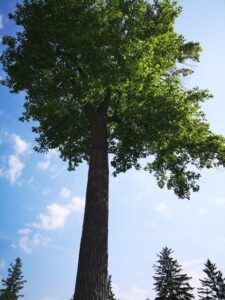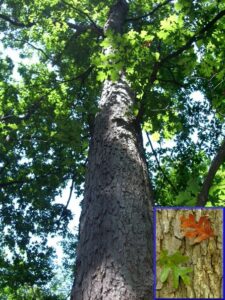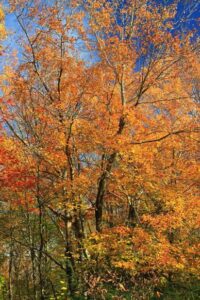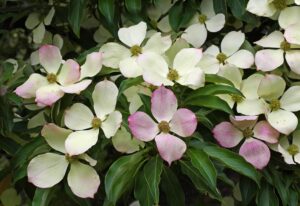Westchester is home to some of the largest and oldest trees in New York State. Many of our mature trees are a few centuries old. The majestic Bedford Oak, a white oak at the corner of Hook Road and Cantitoe Street in Bedford was planted around 1550 give or take, making it almost five hundred years old.
There are so many more majestic trees throughout the county that may not be as well known. But all the trees lining our streets and planted in our parks and yards contribute to the collective natural beauty of Westchester: a reason so many of us are drawn to live and work here.
Let’s keep contributing to that natural beauty and plant more trees now for future generations to enjoy. Here are the top four trees I recommend, all native to this region.
Tulip Tree – Carbon Sequestration Champion

The tulip tree, or Liriodendron tulipifera, is a green giant growing up to 90 feet tall and 50 feet wide. We never get to see its cup-shaped yellow and orange spring flowers because they flower so high up above our heads. This tree can store over 120 pounds of carbon dioxide per year in its large woody biomass, making it an excellent choice for offsetting your carbon footprint.
White Oak – Top Tree for Caterpillars

If you want more songbirds, you will need to attract more caterpillars for them to eat. For example, chickadees need to feed their young hatchlings about 500 caterpillars in one day alone. Multiply this by 16 days until the little baby birds leave the nest and that is 8,000 caterpillars.
According to entomologist Doug Tallamy, the white oak (Quercus alba) supports 537 different kinds of caterpillars. If you want more birds, plant more white oaks.
Sugar Maple – Hello Fall Foliage

Every fall, New England lights up with a brilliant display of yellows and oranges as the sugar maples (Acer saccharum) turn color. Many other trees turn color, but the sugar maples are the real standout and the main reason why the Northeast has such a reputation for incredible fall foliage. Bees, insects, and moths feed off its pollen and leaves, goldfinches and nuthatches consume its seeds, buds, and flowers, and chickadees and vireos build their nests in the canopy. How could you not plant this native tree in your yard?
Dogwood – Spring is Here

Flowering dogwoods (Cornus florida) will not grow as tall as the other trees listed here and are a sub-canopy tree, perfect for a smaller space in your yard. The bright red berries feed birds in fall and even into early winter, when little other food is available. While sugar maples light up the Northeast in the fall, dogwoods put on a show for us in the spring with their delicate white or pink petals flowering in April and May.
I wanted to end with an English proverb and leave you with a little inspiration to get planting: “If you wish to be happy for a year, plant a garden. If you wish to be happy for a lifetime, plant a tree.”
Amanda Bayley is the CEO & Co-Founder of Plan it Wild, a sustainable land management company that is bringing back native habitats to Westchester yards and commercial spaces. More Nature. Now. www.PLANitWILD.com. All photos courtesy of Flickr.com
![]()







